Over the last 50 years, the agricultural industry has seen a tremendous transformation. Machine advancements have increased the scale, speed, and productivity of farm equipment, allowing for more efficient cultivation of more land. Seed, irrigation, and fertilizers have also greatly improved, assisting farmers in increasing yields.
Agriculture is now in the early stages of yet another revolution, with data and connection at the center. Artificial intelligence, analytics, linked sensors, and other developing technologies could boost yields, enhance water and other input efficiencies, and promote sustainability and resilience in crop production and other areas of agriculture.
However, none of this is possible without a good IT network infrastructure. According to an analysis performed by McKinsey, if agricultural connectivity is successfully implemented, the industry might add $500 billion to the global gross domestic product by 2030. This would represent a 7 to 9 percent increase over the predicted total and would relieve much of the current pressure on farmers. According to research from the McKinsey Center for Advanced Connection and the McKinsey Global Institute, it is one of just seven sectors that will add $2 trillion to $3 trillion to global GDP over the next decade as a result of advanced connectivity.
Agriculture must embrace the connectivity-enabled digital revolution. Agriculture, however, remains less computerized than many other businesses around the world. Previous advancements were mostly mechanical in the form of more powerful and efficient machinery, and genetic in the form of more productive seeds and fertilizers. To accomplish the next productivity jump, significantly more advanced digital technologies are required. Some already exist to help farmers use resources more efficiently and sustainably, while others are in the works. These new technologies have the potential to improve decision-making by allowing for better risk and variability management in order to optimize yields and improve economics.
In this blog, we’re going to cover how agriculture benefits from cloud computing. Let’s get started!
Innovations in Agriculture: Cloud Computing
With close to 7.8 billion people inhabiting this earth and enjoying tasty food, it’s inevitable to consider ways to meet the rising demand. In fact, estimates show the demand for food is expected to increase anywhere between 59% to 98% by 2050, but unfortunately, places to farm are scarce. As a result, agriculture companies need to be smarter about finding innovative ways to get more out of each piece of land.
Without cloud solutions, it's hard to build a good IT infrastructure. Companies in the agriculture industry don't have to make their own solutions from scratch. Instead, they can use cloud systems and focus on their main business. For example, we’re not far off from a reality where farm vehicles like tractors and combine harvesters will be able to work on their own with the help of GPS and cloud systems.
When talking about cloud computing in agriculture, it’s almost inevitable to mention precision agriculture. Precision agriculture uses technology to keep track of and get the most out of everything, from tools and fertilizer to water and soil. Cloud computing is often used to gather, analyze, and store data about agriculture. Cloud-connected wireless sensors collect data from the field, which is then analyzed by machine learning algorithms in real-time to give farmers a better idea of how their crops are doing. Sensors can keep an eye on the moisture, pH, protein content, nutrients, and temperature of the soil.
The algorithms, on the other hand, can figure out how changes, like adding or taking away herbicides, will affect crop production. By comparing current measurements to the best growing conditions, farmers can figure out exactly how much water and fertilizer are needed. This saves resources, cuts down on waste, and keeps the environment from being affected in ways that aren't necessary.
It's the coming together of big data, AI, cloud computing, and the Internet of Things. When these things work together, they can help farmers reduce greenhouse gas emissions while getting the most crops out of their land.
Cloud Computing Farming for Sustainable Agriculturing
Agrivi: Farm Management Software
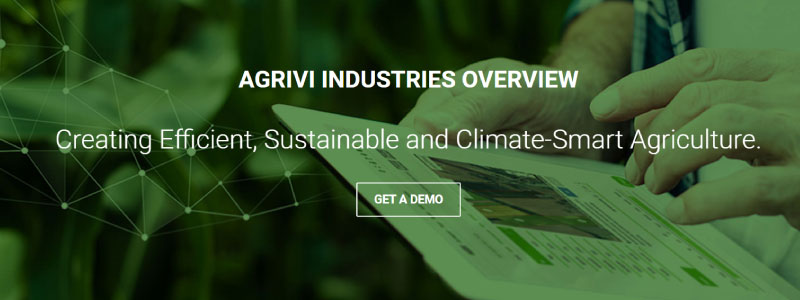
The Agrivi farm management software portfolio helps stakeholders of the agrifood value chain solve real-life challenges of the industry. Aimed at the farm, enterprise farm, and food and beverages industry, banks, input manufacturers, and agronomic advisory, Agrivi is centered around the idea of digitalizing agriculture for profitability increase.
Agrivi has built a full suite of digital agriculture solutions for farms, food companies, agribusiness banks, agriculture ministries, and other key players in the agri-food value chain to help them adapt to change and make their digital transformation projects more effective.
The powerful farm management software gives real-time agronomic and economic insights throughout the entire food production process. This helps producers make healthy, nutritious, and safe food by using sustainable and climate-smart agricultural practices.
Agrivi provides agri-food stakeholders the tools they need to work together with growers by using a digital platform. We give them agronomic practices and advice to help them meet quality requirements and make their production sustainable and profitable. We also use big data analytics to find out which actual practices their farmers use that lead to the best food quality and much more.
Akologic Smart Agriculture
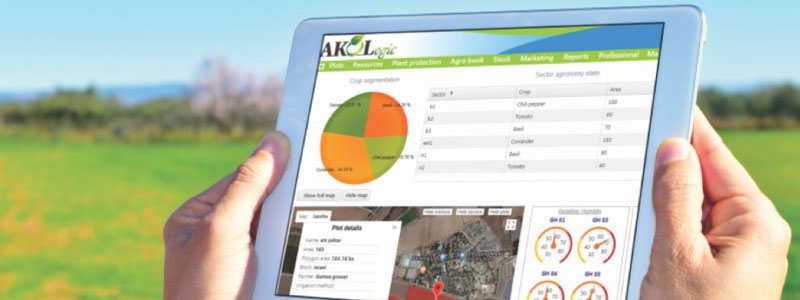
Founded in 2019 by farmers with a unique set of skills in farming, agriculture technology, and customer service, AKOlogic’s food supply chain platform brings safety, efficiency, and trust to agro-businesses.
The platform helps take supply chain to the next level with an industry-specific and industry-first cloud platform that provides a detailed outlook of every crop’s lifecycle.
The cloud platform tracks each blade of grass in real-time, analyzes it and shares it with partners all along the food supply chain. AKOLogic is a unique platform that organizes and analyzes crop data across the entire spectrum, improving efficiency, food safety, and farming thanks to complete visibility of how crops grow and change over time and transparency for trusting relationships.
CLAAS - First direct cloud-to-cloud solution for agriculture industry
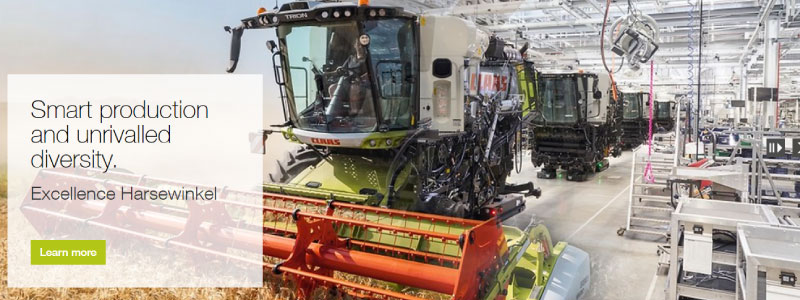
CLAAS has joined forces with the Dutch start-up AgXeed B.V., to work together to make and sell farm machines that can work on their own. To meet the needs of a growing world population, the farming industry will have to keep making farms more productive in the coming decades. At the same time, the number of people working in the industry, as measured by land area, keeps going down. In some places, it's getting harder to find skilled workers, and farmers still work more hours than people in many other jobs.
To deal with these problems, the agricultural machinery industry has come up with a number of solutions, such as operator assistance and machine optimization systems, precision farming technologies, and even different sizes and types of self-driving machines. For CLAAS, working with AgXeed and putting money into it is a natural step toward making technologies that will work in the future.
CleverFarm, Cloud Farm Management
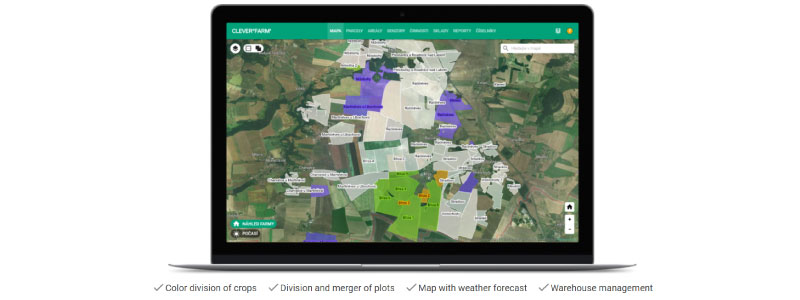
CleverFarm's map-based farm management system replaces Excel spreadsheets. Assume responsibility for the daily operations of the farm and make sure all responsibilities are met, including those set forth by the law.
CleverFarm is a fledgling AgTech company that was recognized three times in 2021 for its achievements. Vestbee has ranked it as one of the region's top ten start-ups, while Generali and CzechCrunch have named it the region's best environmentally friendly business.
CleverFarm delivers intelligent solutions to agriculture, which means making farming more effective and profitable while also automating the process as much as possible. Using data from IoT sensors and satellite photos, CleverFarem developed an app that helps farmers in various agro-operations by displaying and analyzing the results. Water, pesticides, fertilizers, and seeds are all reduced while crop quality is improved as a result of the CleverFarm solution.
DJI - Copters and Agriculture Clouds
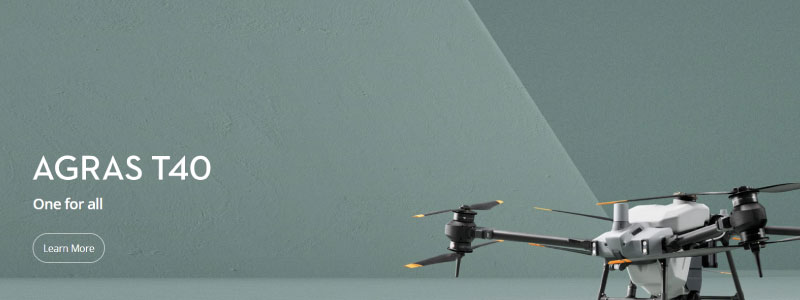
In order to make farming more productive than ever before, DJI Agriculture provides operators with cutting-edge technology and new processes. These are some of the most important solutions:
- In dense thickets, the Agras T30 uses branch sensing technology and adjustable arms to provide consistent adherence to liquid insecticides and a 100% increase in droplet count. When using a smartphone, users can easily manage a 3D digital garden using the cloud-based smart farming platform and cloud-based mapping.
- When using the Phantom 4 RTK, you can see construction plans in 3D, use GIS to manage the property, record changes in the ground, develop basic plans for precision agriculture, and set construction and planning reference points in real-time.
- With DJI Terra, you can map an area and analyze the data collected from farms, orchards, and forests, and then apply fertilizer in a variable amount using DJI Terra's mapping and analysis capabilities. Mission planning features in DJI Terra also help to cut down on operational time by automatically designing flight paths.
Individual farmers and agricultural cooperatives alike can benefit from DJI Agriculture's smart solutions, which are designed to save time and optimize workflows as well as provide powerful equipment for agriculture specialists.
John Deere Cloud with Azure, full autonomous tractors
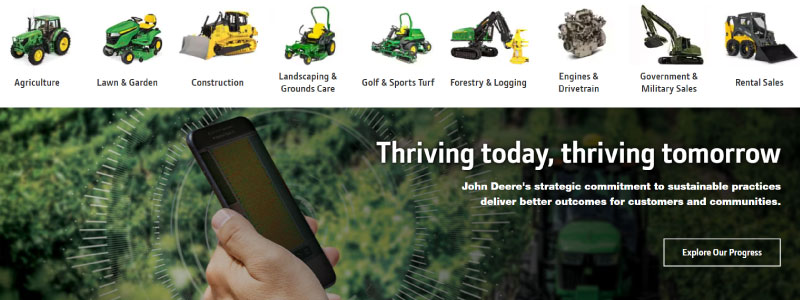
A common sight in fields all around the world are the distinctive green and yellow John Deere tractors. A shift is taking place in the manufacturing facilities as a result of the company's dedication to its smart industrial vision. This effort is fueled by a well-stocked technology portfolio that includes cloud platforms, on-premises datacenters, and edge devices in the factories.
The modernization strategy of John Deere makes the most of the company's strengths while also laying the groundwork for the future. As a result, an Azure hybrid cloud solution enables companies to connect the dots between their on-prem and cloud infrastructures. Microsoft's Azure Arc technology is helping John Deere streamline manufacturing operations by providing a common view across platforms.
Another key modernization milestone from John Deere is its autonomous tractor. John Deere unveiled a large-scale production-ready fully autonomous tractor during a press conference at CES 2022. TruSet-enabled plow, GPS navigation system, and new and sophisticated technology are all included in the machine that Deere is calling the 8R. Farmers will be allowed to use an autonomous tractor in late 2022.
Kubota: AI-based solutions for agriculture with Microsoft
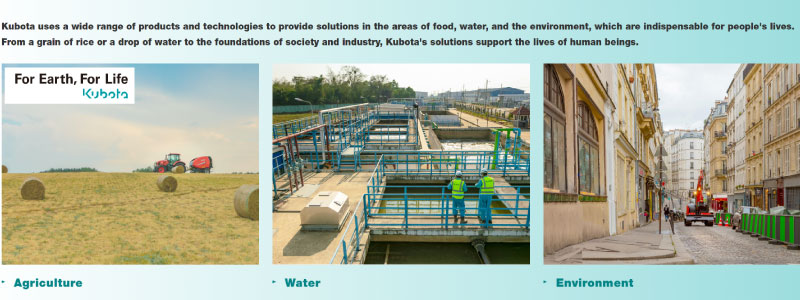
It was announced March 2022 that Kubota Corporation and Microsoft entered into a long-term strategic partnership aimed at driving the company's digital transformation. Kubota will move its mission-critical SAP and IT infrastructure to Microsoft Azure's secure cloud platform. This decision by Kubota will allow it to standardize on Microsoft Azure and move from an implementation methodology to a solution provision strategy. In addition, AI-based solutions for the food, water, and environmental industries will be developed by the enterprises.
Kubota's agricultural machinery and services are designed to help meet the world's growing food demand, and the company is dedicated to working with customers in the agriculture business to find solutions to their problems. Kubota will provide a wide range of water and environment-related items, from water pipelines to water treatment facilities, in order to provide comprehensive solutions.
Microsoft Cloud Agronomics

Remote-sensing and AI-powered Cloud Agronomics provides farmers with real-time information about their crops and soil, lowering greenhouse gas emissions and promoting sustainable food production.
In comparison to satellites, Cloud Agronomics collects 300 times more data per pixel when using bespoke hyperspectral imaging equipment on manned aircraft. The raw data is transferred to Azure, where georeferencing, calibration, and analytic techniques are used to transform it into actionable information.
Farmers will be able to use Cloud Agronomics' tagged data to manage crops more effectively and more proactively in the future. The first standardized carbon index for carbon credit marketplaces will be provided by real-time monitoring of carbon dioxide levels in the environment, which is the procedure of extracting excess carbon dioxide from the atmosphere and storing it in the soil to encourage plant development.
Planet.com - Data Driven Precision Agriculture

Planet's high-resolution, high-frequency satellite technologies enable lucrative, sustainable farming. Planet offers agricultural insights for every location and season, helping growers monitor crop health from preseason to harvest to farm more efficiently, productively, and sustainably.
Planet's high-resolution satellite photography enables precision agriculture even in cloudy locations. Planet provides vast region coverage, field-level information, frequent in-season revisit rates, and instant access. Planet data can be easily connected with cloud-based APIs. Annual crop maps enable farmers and agronomists see in-field patterns and regional trends when planning.
Planet's 3.7-meter-resolution satellite photography enables precise digital agriculture and insect identification. Farmers and agronomists may monitor and maximize crop health using this daily data. Planet provides color-corrected, three-band, sensor-calibrated multispectral images and insights. Planet solutions give frequent, granular, scalable data for prompt, educated decisions.
Agriculture software solutions
The United Nations says that in order to feed the world's expected population of 9.7 billion people in 2050, agricultural production must rise by 69% between 2010 and 2050. Internet of Things (IoT) technologies can be used to track trends and make more things because they can connect to each other and share data. With so many complicated devices collecting so much information about agriculture, agribusinesses need a way to store and process the big data in a safe way.
Svitla Systems has rich experience in cloud systems, helping numerous agricultural companies in their journey to adopt cloud computing technologies for smarter processes. Additionally, we’ve worked on several drone-enabled data and imagery analytics systems for precision agriculture in the cloud, giving us ample experience in the field to advance projects in such areas.
For more information about how we can accelerate your cloud computing adoption journey in agriculture, reach out to our Svitla Systems representatives who will be happy to provide all the information and solutions you need.

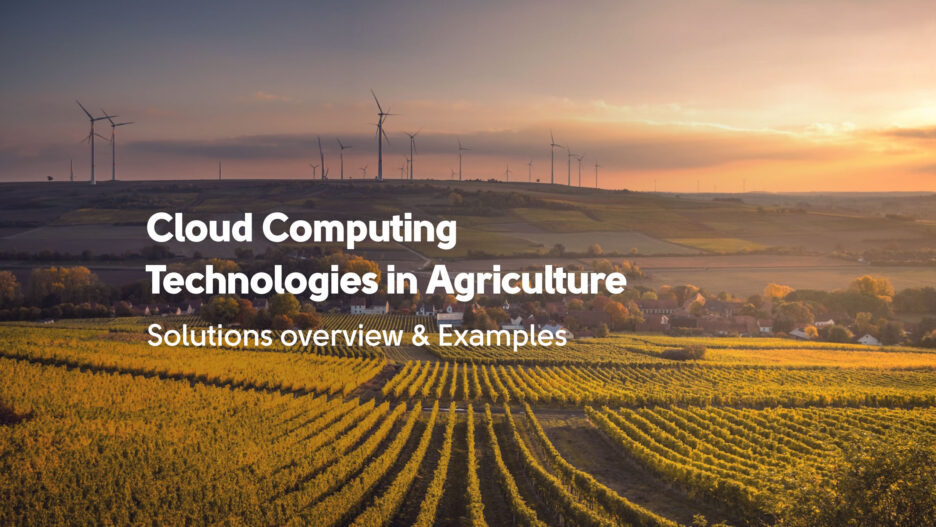



![[Blog cover] SEO optimization best practices](https://svitla.com/wp-content/uploads/2025/05/Blog-cover-SEO-optimization-best-practices-560x310.jpg)